“Life of Pi,” the movie adaptation of Yann Martel’s 2001 award-winning novel, is not only a journey on screen but off screen too – a long and tortuous one. Over nine years, four directors were involved in its making: M Night Shyamalan (Sixth Sense), Alfonso Cuaron (Harry Potter and the Prisoner of Azkaban), Jean Pierre Jeunet (Amelie, Delicatessen), and finally Ang Lee (Brokeback Mountain, Crouching Tiger Hidden Dragon) who finally brought this adventure to a fitting end.
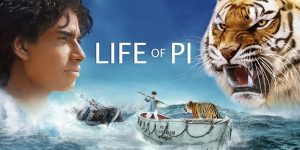
Having been born and brought up in Pondicherry – I am one of the few film makers to emerge from this charming little former French colony – I seemed to be a natural choice when M Night came here in 2004 to research and scout locations for a possible movie adaptation of “Life of Pi.” That is where it all began. I had very little interaction with M Night; he came and was soon gone. Two years went by and I read somewhere that he was no longer part of the project; another director was now going to take in hand the responsibility of bringing “Life of Pi” to the screen.
In the winter of 2005, Jean Pierre Jeunet, of whom I am a big fan, visited Pondicherry for an extensive scout with his remarkable Director of Photography, Bruno Delbonel. I remember that we hired a tuk-tuk, folded back its roof, and both director and DoP scouted locations standing inside this vehicle as it puttered precariously around town. It was quite a sight for the locals.
Soon after they left, I learnt that the idea of making “Life of Pi” into a movie had been abandoned. Reports suggested it was too expensive a movie to make. Or perhaps Fox did not quite subscribe to the vision of Jean Pierres. I really am not sure.
In mid-2009, as the project was fading into a dim memory, I received a call requesting me to be available for a scout once again for the same project. This time though it with Oscar-winning director Ang Lee. I began to feel that I was going to meet all my favourite directors in Pondicherry because of this one movie! Ang was accompanied by his screenplay writer David Mangee (Finding Neverland) and their researcher Jean Castelli (who would later write “The Making of the Life of Pi”).
I felt this trip and scout was one of the most determining moments in the making of the film. The vision, the budget, the technology (3D/special effects), the authenticity of the script, every aspect of the movie were discussed, reviewed and gradually began to conceptualize.
As I began spending more time with Ang, I realized that though this was a movie set in a world of fantasy, the director wanted a remarkable sense of authenticity when it came to “facts” that were a part of this fantasy. For example, he wanted Pondicherry to feel exactly like it was in the late 1960s, he wanted his actors to speak English with a right regional Indian accent (and some French too). This pursuit of authenticity was all encompassing: using the kind of music that played on the radio at that time, including only those comic books that may have been available to a young Pi. He especially wanted to get right the spiritual seekings of a young Indian boy from Pondicherry.
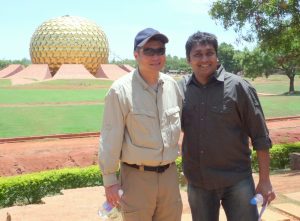
As I worked with him, I noticed Ang listened, absorbed and felt more than he spoke. His curiosity about every small detail was like a child’s and yet so pertinent.
We hired a van and, in the sweltering summer heat of Pondicherry, visited as many locations as possible that were mentioned in the book. The Botanical Gardens (which finally became the zoo in the film), temples, churches, mosques, schools, the Ashram’s swimming pool, the Indian Coffee House, Auroville, beaches, banyan trees and more. We made it a point to meet many local residents of Pondicherry. Though Pondicherry is enclosed by the much larger Indian state of Tamil Nadu, Ang realised that this city had a unique culture and a distinct character which he wanted to project with authenticity in the movie.
Soon I had found a place in the making of the movie. I knew I wanted to be a small part of Ang’s mind, his vision, philosophy and research – a consultant seemed to be the best description. And, indeed, that is the title that finally appears next to my name as the film’s end credits roll.
Apart from being responsible for some logistics, I soon found my primary role was of interacting closely with Ang, and helping him collect and put facts together, especially for the Indian chapter of the shoot. This included research concerning the various departments of the movie: locations, casting, costumes, music, etc.
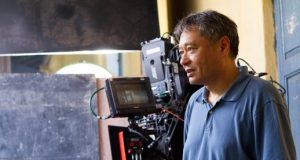
During my research, I discovered many interesting facts, some that were even personal to me. For example, I hear that author Yann Martel used to sometimes visit my maternal uncle, Chimanbhai Patel, for his afternoon cup of “chai.” Mr. Patel was also known as Photo Patel as he owned a famous photography studio next to the Indian Coffee House in Pondicherry (also mentioned in the book). It seems the Patel in the Pi emerged from these meetings.
After a year of back-and-forths, one fine day in 2010 I heard that “Life of Pi” had finally been green lit. The book was indeed going to be made into a movie.
On their next scout to Pondicherry a month later, Ang brought along his main crew including Director of Photography Claudio Miranda (Curious Case of Benjamin Button, TRON: Legacy), Production Designer David Gropman (The Cider House Rules, Chocolat), Producers David Lee and David Womark, Special Effects Producer Susan McLeod and the India Take One team that were to become the line producers for the shoot in India.
By this time there were a lot of elements that were already determined and an advanced version of the script was ready. Ang knew he wanted to make the movie in 3D and Pondicherry was going to be a very important part of the film.
We revisited many of the identified locations from our first scout and some new ones and these were studied in great detail by the different department heads on the crew. It was obvious that the Pondicherry of today did not look anything like it did in the late 1960s and this is where special effects came into play. Susan McLeod and her team started planning to take the existing elements of the town and modify them in a way that made them belong to that long-gone era. Lamp posts and trees were to be removed, tarred roads converted into mud roads and digitally generated animals placed in the botanical gardens to create a fantastic zoo that never existed.
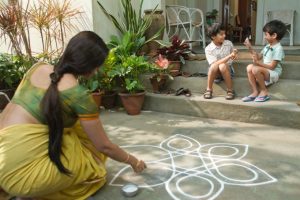
One afternoon, as we walked through the French Quarter of Pondicherry, I casually pointed out my grandparents’ beautiful old house to Ang and David Gropman. The next thing I knew was that they wanted this to be Pi’s house in the zoo. We soon realized that the house was not big enough to fit the the 3D equipment and its crew, therefore a decision was made to rebuild the house, almost identically, including its furniture and plants, but on a larger scale in Taiwan.
Similarly the Sri Aurobindo Ashram swimming pool where the fictional Pi initially learnt to swim was now modernised and was restricted to filming. It was therefore decided to recreate it in Taiwan, almost identically to its 1960s look with the help of archival references, photographs and special effects.
At the same time, Avy Kaufman (Lincoln, Prometheus, Brokeback Mountain), the Casting Director of the film was visiting many different cities in India to find the right cast for the film. She found Pi in Suraj Sharma after auditioning almost 3000 other boys. Ironically, Suraj had only accompanied his brother to the audition to lend moral support, for which trouble his brother had promised him a Subway sandwich. Look what he came back with!

For us, this intense scout was all about logistics by day and philosophy by night. At lunch, we generally discussed the technical aspects of the film, locations, production, etc. but at dinner the conversation focused more on thoughts and feelings and the recreation of a fantastic but believable Pondicherry environment.
The crew’s next visit to town was going to be the shoot. Logistical preparations for the 14-day shoot in India began almost two months in advance. This was meticulously undertaken by India Take One, (Indian line producers on Hollywood blockbusters Slum Dog Millionaire, Mission Impossible 4, Marigold Exotic Hotel) who set up a fully equipped, three-storey production office on location. As the shoot date of 18 January 2012 neared, the crew grew from 7 to 70 to almost 700. A lot of local crew was hired and soon the international crew arrived from Taiwan in a chartered Boeing 747. Almost every hotel room in Pondicherry was taken. A hundred vehicles zig- zagged around, choking the streets of this little town. Pondicherry had never before hosted an event of this scale
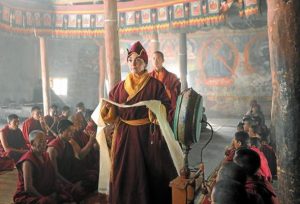
During this hectic time, a strange personal situation arose that I would have never dreamt of. A period French feature film production – “J’irais au Pays des Neiges” (I want to go to the Land of Snow) on the life of French explorer Alexandra David Neel that I was the executive producer of and that my company Magic Hour Films was line producing – had got delayed and because of unavoidable circumstances now had to be filmed on exactly the same dates as “Pi” and in locations very close by. Apart from adding another crew of 100 and 20 more vehicles to the streets of Pondicherry, the situation promised to be a logistical nightmare for me. Good planning and coordination seemed to be the only solution. As ADN was a much smaller project compared to “Pi,” we all decided that the small would follow the big and crossing of paths was to be avoided as far as production went. Being the common factor between the two shoots (apart from a tiger which acted in both the movies!), I had to play a balancing act to make sure everything went harmoniously. I was on the sets of “Pi” every morning but during lunch breaks and after the day’s shoot I would rush to my other set which, thanks to a very efficient crew, was managed without a hitch. Some of the crew from the two shoots shared the same hotels and this greatly helped with the coordination and the feeling of bonhomie between them.
After the completion of filming of “Pi,” my role as consultant continued during much of the post production. This included research for the soundtrack, sound design and dubbing of the film.
Being on the sets with Ang Lee and interacting closely with him was not only a delight but a huge learning experience, both in technical as well as human terms. It was amazing to see how this genius of a man used his silent power to harmoniously and humbly guide this massive crew and production towards a common vision. I found his deep and genuine relationship with the craft truly moving and inspiring.
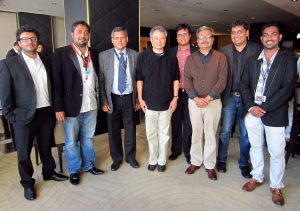
Then came the icing on the cake: attending the premier of “Life of Pi” at the 50th New York Film Festival at Lincoln Centre. These are some thoughts I shared after my first viewing experience of the film:
“Magical, soul-stirring, other worldly, positive, layered, ahead of its time, a 3D encounter you will have never experienced before. (Warning: your moist eyes could make it difficult for you to keep your 3D glasses on.)
“Ang Lee has brought about a cinematic revolution with this masterpiece. He has managed to build a subtle bridge between Asian philosophy and Hollywood cinema. Suraj is God sent.
“The standing ovation at the end of the screening was a fitting tribute to a man whose journey in making this movie could have been as difficult as that of Pi’s, but at the end of the tunnel there was indeed Light.
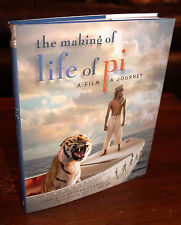
“I am both humbled and proud to be a small part of Pi’s journey and this stupendous work of art.”
(“The Making of the Life of Pi” by Jean Castelli is a 160-page book I recommend you read. My experience deals mainly with the Indian chapter of the shooting of the movie –and that’s only 20 percent of the “Life of Pi” journey. You can find the rest of the behind-the-scenes story in this revealing book.)